
OR

You can travel the world a dozen times over and still not see all of the spectacular sites that exist. Some destinations are so popular that a lot of people travel to see them while other destinations offer just as much ‘wow factor’ without the popularity. It’s time to start saving up for a trip around the world for here are some largely unknown destinations you must see at least once in your lifetime.
Wulingyuan | China
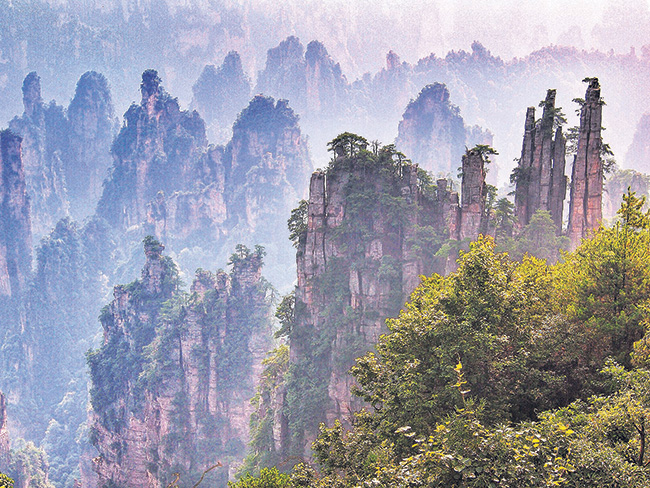 This scenic and historical site located in south-central China’s Hunan Province is home to over 3000 enormous sandstone pillars, many of which tower over 200 meters in height.
This scenic and historical site located in south-central China’s Hunan Province is home to over 3000 enormous sandstone pillars, many of which tower over 200 meters in height.
Wulingyuan, China, is one of the world’s most stunning natural sites with over 40 caves, many with large calcite deposits, and two natural bridges called the Bridge of the Immortals and the Bridge Across the Sky. The towering pillars are composed of quartzite and sandstone and are karst formations (rock formations created as the result of the dissolution of soluble rock).
The incredible area is located 170 miles northeast of Changsha and was declared a UNESCO World Heritage site in 1992, but it still remains relatively unknown by much of the world’s population. There are over 560 sites to view here including four national parks.
Ki Monastery | India
Ki Monastery or Key Gompa is a Tibetan Buddhist monastery which stands spectacularly upon a hill overlooking the small Indian village of Kibar.
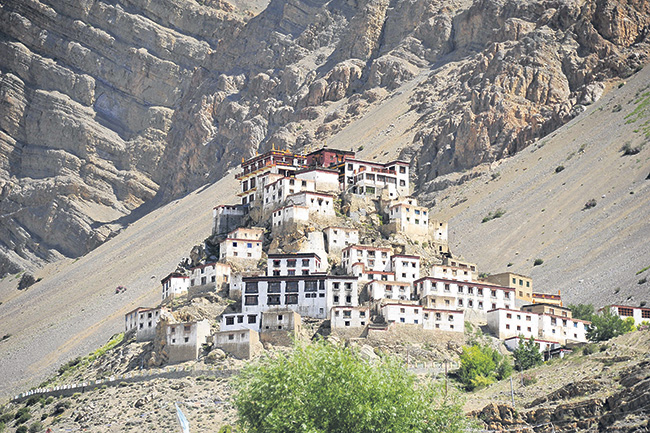
The monastery stands at 13,668 feet above sea level and the village below is said to be the highest in India. Founded in the 11th century, Ki has not had a peaceful history. The monastery has been attacked many times over the long course of its existence, ravaged by Mongol armies and devastated by fires and earthquakes.
The constant destruction and reconstruction has resulted in the monastery being built in a box-like fashion. The walls of the monastery are covered with paintings and murals, an example of the 14th century monastic architecture, which developed as the result of Chinese influence. Ki Monastery is around 15–20 km from a town called Kaza to where you can take a bus from Manali. The route to the monastery remains accessible only up to early November and reopens during mid June mainly because Rohtang pass and Kunzum pass receive heavy snowfall during winter.
Valley of Flowers | India
There is just something incredible about the soaring peaks rising into the clouds and the steep inclines on the interior completely covered in luscious greenery and unique flora.
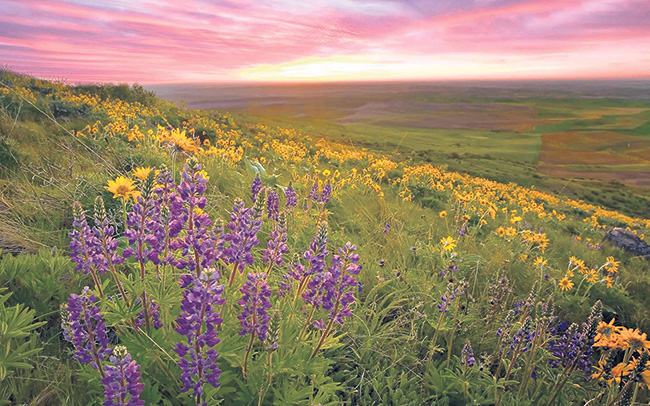 As well as being a site of grandeur and great natural beauty, the area is home to a number of rare, endangered animals such as the Asiatic black bear, snow leopard, brown bear, and blue sheep. Located in West Himalaya, in the state of Uttarakhand, this high-altitude Himalayan valley has long been acknowledged by renowned mountaineers, botanists, and in literature.
As well as being a site of grandeur and great natural beauty, the area is home to a number of rare, endangered animals such as the Asiatic black bear, snow leopard, brown bear, and blue sheep. Located in West Himalaya, in the state of Uttarakhand, this high-altitude Himalayan valley has long been acknowledged by renowned mountaineers, botanists, and in literature.
It has been recognized internationally for over a century and is referenced in the Hindu religion. Yogis often go here just to meditate. There is no best time to visit Valley of Flowers as the place is always stunning but if you want to see maximum number of flowers then July and August might be the right time whereas if you want to see lot of glaciers you should visit in June.
Marble caves | Chile
The Marble Caves of Patagonia, Chile, are beautiful vibrant blue caverns, partially submerged in the equally stunning turquoise waters of Carrera Lake.
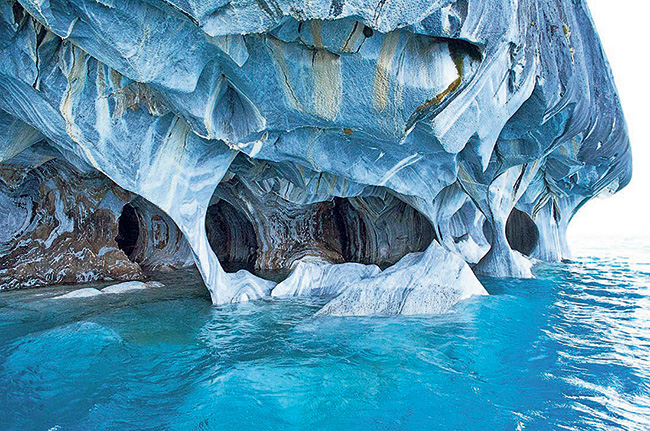 The lake itself is on the border of Argentina and Chile, with the caves located on the Chilean side. The caves are comprised of three main caverns: the Chapel (La Capilla), the Cathedral (El Catedral), and the Cave (La Cueva). Visitors to the caves can explore them in a small boat or kayak, but only when Carrera Lake’s waters are calm and gentle.
The lake itself is on the border of Argentina and Chile, with the caves located on the Chilean side. The caves are comprised of three main caverns: the Chapel (La Capilla), the Cathedral (El Catedral), and the Cave (La Cueva). Visitors to the caves can explore them in a small boat or kayak, but only when Carrera Lake’s waters are calm and gentle.
A rare and invaluable natural wonder, the existence of these caves is currently threatened by plans to build five large dams in the area. But to reach this remote place, located in the far southern tip of the country, visitors must fly from the capital Santiago, 800 miles to the next nearest large city, Coyhaique, and then drive on challenging dirt roads 200 miles south to the lake.
Hang Son Doong | Vietnam
In 1991, a Vietnamese farmer discovered an underground cave that’s never been explored in Phon Nha-ke Bag National Park.
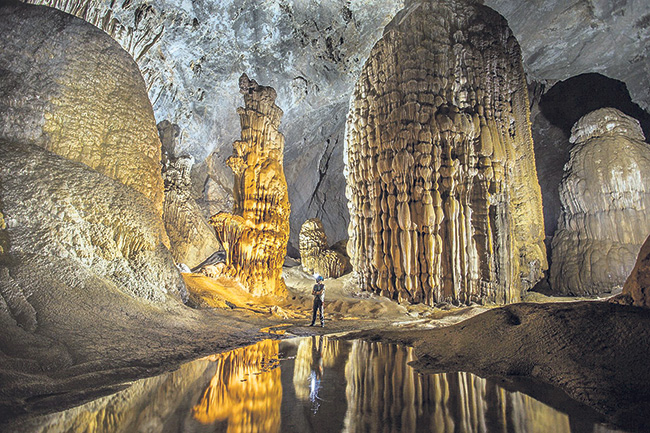 Now known as the biggest cave in the world, it is believed to have been formed somewhere between two and five million years ago. Before you experience the one of a kind underground cave journey, you will need a rope to descend 262 feet below. Hang Son Doong is over five kilometers long, with sections reaching up to 200m tall and 150m wide.
Now known as the biggest cave in the world, it is believed to have been formed somewhere between two and five million years ago. Before you experience the one of a kind underground cave journey, you will need a rope to descend 262 feet below. Hang Son Doong is over five kilometers long, with sections reaching up to 200m tall and 150m wide.
It is large enough to have its own jungle, river, and climate too. And, the rivers have their very own beaches. Some of the world’s rarest rocks are also found here. With a total measured volume of 38.5 million cubic meters, the Son Doong cave surpasses Deer Cave in Malaysia, which was previously considered to be the world’s largest cave.
Tanah Lot | Bali
This rock formation off the Indonesian island of Bali is also home to the pilgrimage temple Pura Tanah Lot (literally “Tanah Lot temple”), a popular tourist site as well as a perfect photography spot.
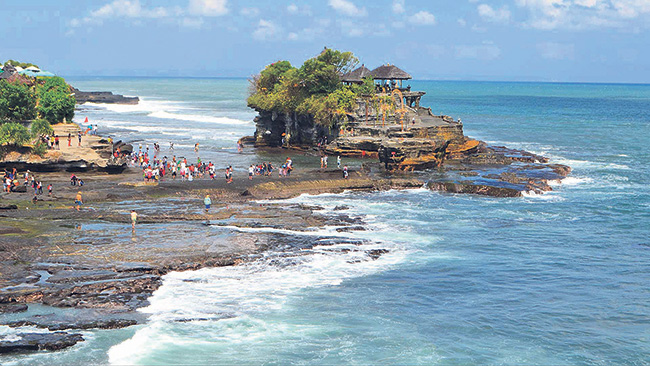 Due to the tide of the ocean, the rock housing the temple has been changed many times throughout the years. After an artful reconstruction to prevent the temple from crumbling, now more than one-third of the rock is artificial. To reach the temple, visitors must walk through a set of Balinese market-format souvenir shops which cover each side of the path down to the sea.
Due to the tide of the ocean, the rock housing the temple has been changed many times throughout the years. After an artful reconstruction to prevent the temple from crumbling, now more than one-third of the rock is artificial. To reach the temple, visitors must walk through a set of Balinese market-format souvenir shops which cover each side of the path down to the sea.
Clamorous announcements screech from loudspeakers as you head towards the temple but on the mainland cliff tops, there are restaurants where you can rest, get a bite to eat, and enjoy the spectacular view. A visit to Tanah Lot for sunset is one of the most popular organized tours offered in Bali. Once there, check with your hotel tour operators to find out if they offer this service.
Baracoa | Cuba
Perched on the country’s eastern edge, Baracoa, Cuba, is just beginning to be discovered by tourists. Those who venture to this remote northeastern corner of the island will discover an almost unspoiled colonial village surrounded by secluded beaches and virgin rainforest.
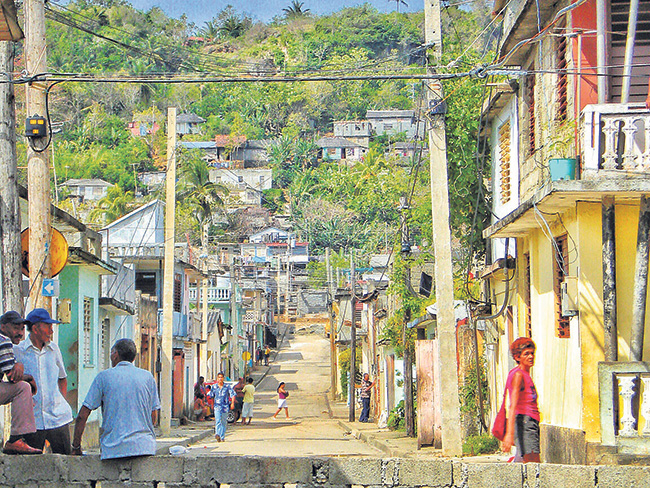 There aren’t numerous monuments to visit in Cuba’s oldest and isolated settlement but the town’s charm comes from its authenticity which makes it a pleasant experience to wander about. Aside from its storied center, which is surrounded by a craggy coastline and a blend of old and new buildings, you will also find dramatic mountains lingering in the distance and delectable cuisine (white chocolate is famous here).
There aren’t numerous monuments to visit in Cuba’s oldest and isolated settlement but the town’s charm comes from its authenticity which makes it a pleasant experience to wander about. Aside from its storied center, which is surrounded by a craggy coastline and a blend of old and new buildings, you will also find dramatic mountains lingering in the distance and delectable cuisine (white chocolate is famous here).
In fact, the off-the-beaten-path area is ideal for a cucurucho (a sweet treat filled with fruits, honey, papaya and coconut). Whatever you do, don’t miss strolling along Los Martries Avenue, a seaside thoroughfare overlooking the Atlantic Ocean. While 2016’s Hurricane Matthew hit Baracoa hard, the town is already on the rebound.
Quinta de Regaleira | Portugal
The town of Sintra houses this incredible vintage castle with everything a King and Queen could ever want, including grottos, two lakes, servant’s quarters, a chapel, and the incredible spiral staircase.
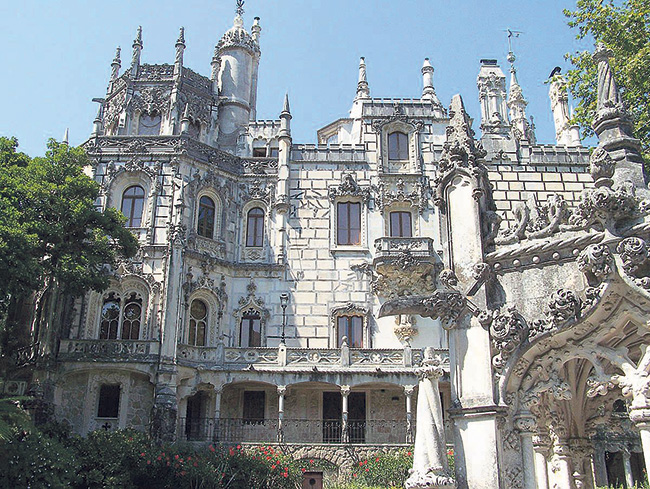 The palace is also known as “The Palace of Monteiro the Millionaire”, which is based on the nickname of its best-known former owner, António Augusto Carvalho Monteiro. Located near the historic center of Sintra, Portugal, it is classified as a World Heritage Site by UNESCO within the “Cultural Landscape of Sintra”.
The palace is also known as “The Palace of Monteiro the Millionaire”, which is based on the nickname of its best-known former owner, António Augusto Carvalho Monteiro. Located near the historic center of Sintra, Portugal, it is classified as a World Heritage Site by UNESCO within the “Cultural Landscape of Sintra”.
The villa is surprisingly homely inside, despite its ferociously carved fireplaces, frescoes and Venetian-glass mosaics. The grand house is split over five floors and has an ornate gothic façade, but the real attraction is to the rear with enchanting gardens. The gardens of the Quinta da Regaleira were styled to represent ancient secret orders, with hidden tunnels and concealed symbolism.
You May Like This

Life is never too pointless to be ended
"Priye Sufi," a book by Nepali author Subin Bhattarai, is a moving and consoling book. The story's primary lesson is... Read More...

'ULFA: The Mirage of Dawn’ offers a remarkably balanced narration on history of ULFA
Rajeev Bhattacharyya’s book offers a remarkable history of ULFA, its formation and rise to prominence, the interplay of its principal... Read More...

Mrityu Diary: A must read book about life and death
"Mrityu Diary" or the “Death Diary” is a book written by the author Tulasi Acharya, which is currently available in... Read More...




Just In
- Nepalgunj ICP handed over to Nepal, to come into operation from May 8
- Nepal to gift two elephants to Qatar during Emir's state visit
- NUP Chair Shrestha: Resham Chaudhary, convicted in Tikapur murder case, ineligible for party membership
- Dr Ram Kantha Makaju Shrestha: A visionary leader transforming healthcare in Nepal
- Let us present practical projects, not 'wish list': PM Dahal
- President Paudel requests Emir of Qatar to help secure release of Bipin Joshi held hostage by Hamas
- Emir of Qatar and President Paudel hold discussions at Sheetal Niwas
- Devi Khadka: The champion of sexual violence victims



_20240423174443.jpg)











Leave A Comment